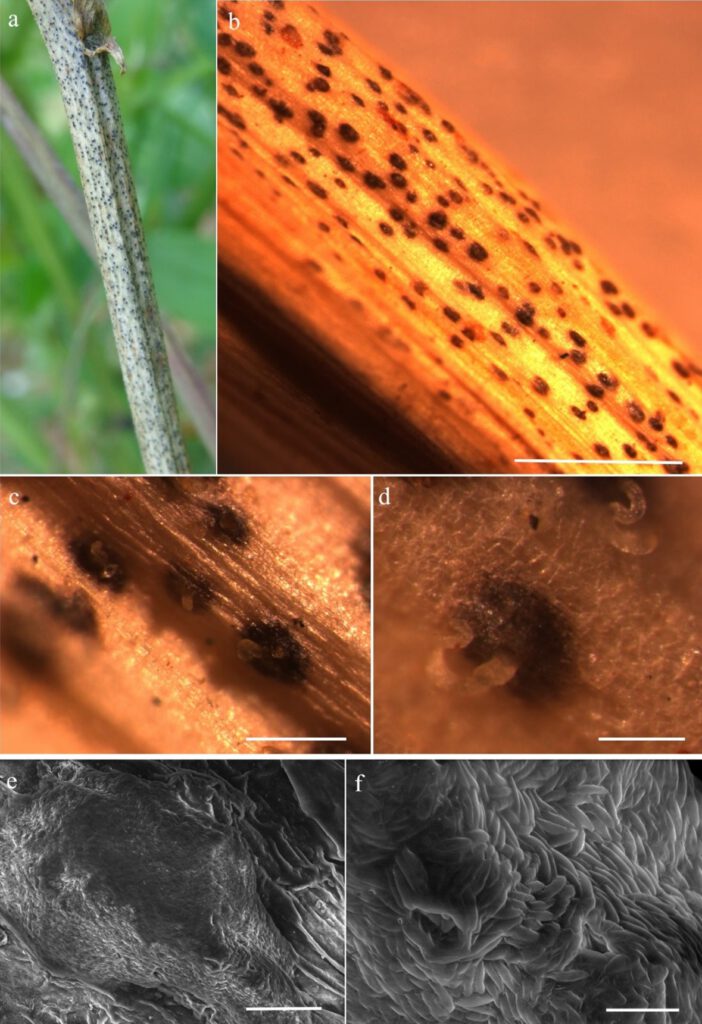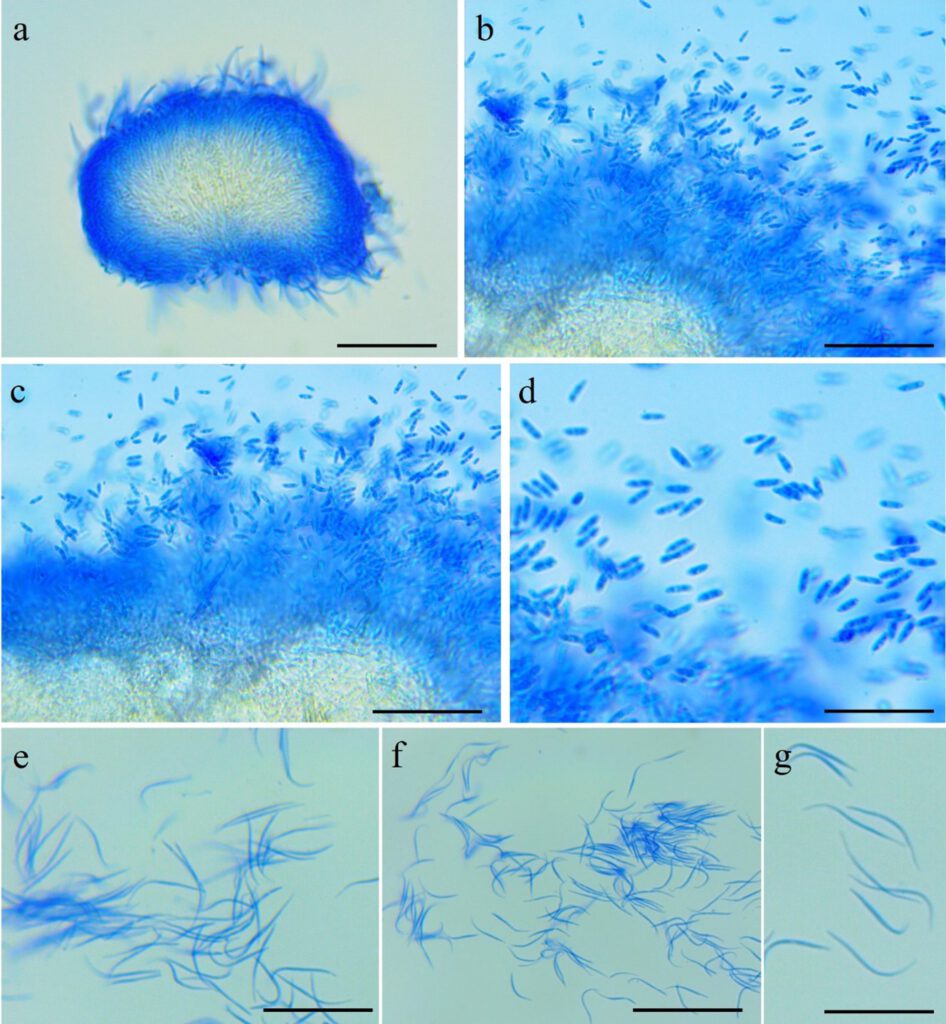Diaporthe longicolla (Hobbs) J.M. Santos, Vrandečić & A.J.L. Phillips, in Santos, Vrandečić, Čosić, Duvnjak & Phillips, Persoonia 27: 13 (2011)
MycoBank number: MB 164797; Index Fungorum number: IF 164797; Faceoffungi number: FoF 11682, Fig.
Pathogenic and associated with stem of Vigna unguiculata (L.) Walp. Sexual morph: Undetermined. Asexual morph: Conidiomata 80-130 µm high, 230 – 320 µm diam. x̄ =118×290 μm, n=20, pycnidial, pyriform, initially immersed, erumpent at maturity, globose to pyriform, black, elongated neck, often with light yellowish white conidial cirrus extruding from ostiole. Pycnidial wall parenchymatous consisting of 4–7 layers of pale brown, thick-walled cells of textura angularis. had globose locules and prominent beaks, which immersed in medium, black, solitary, discoid or irregular. Conidiophores 4–7×4.1–7.3 μm (x̄ =4.4×6.3 μm, n = 30), ampulliform, straight to sinuous, unbranched, hyaline, smooth. Conidiogenous cells 7.8–13.8 × 1.4–2.7 μm (x̄ =10.9×2.1 μm, n=30), phialidic, terminal, cylindrical, slightly tapering towards the apex. Alpha-conidia 5.1–7.5 × 1.2–3.4 μm (x̄ =6.1×2.6 μm, n=20), aseptate, hyaline, smooth, ovate to ellipsoidal, guttulate. Beta-conidia 5.8–7.5×2.5–3.5 μm (x̄ =6.4×2.8 μm, n=10), hyaline, filiform, hamate.
Cultural characteristics: On potato dextrose agar, the fungus initially produced white fluffy aerial hyphae, forming relatively dense concentric pattern colony, which subsequently exhibited light yellow pigmentation.
Material examined: INDIA, Karnataka, Mysuru Doddamaragowdanahally, on infected stem of cowpea plants as pathogen. Pathogenicity tests were conducted and proved to be pathogenic on healthy cowpea plants, 2020.
Distribution: India, China, USA and Other countries
Hosts: Wide host range. Vigna unguiculata is the new record reported in this report.
GenBank Accession Numbers: ITS: MW737797, MW737798, KT819767; TUB2: OM934823, OM934824, OM934825; EF: OM934820, OM934821, OM934822
Notes: The symptoms were observed on stems. Initial symptoms were appeared as small lesions, more or less circular, later elongated, blackish-brown lesions, eventually pycnidia developed. Stem girdling occurs and the shoot above the infected area wilts and dries up. Previously, Phomopsis longicolla is known to be associated with cowpea seeds. However, no reports are available on the association of D. phaseolorum of cowpea. This is the first report of D. longicolla associated with Cowpea from India.

Legend for Figure: Micromorphological features of D. longicolla: a – Cowpea stem affected by Diaporthe longicolla, b – stereo view of infected region showing pycnidial structures; c & d –stereo view showing cirri of spores erupted from pycnidia; e – SEM image of pycnidium, f – conidia of D. longicolla observed in SEM (Scale= bar: b – 10 mm; c-d – 2mm; e – f 10µm)

Legend: Micromorphological features of D. longicolla: a – d Conidial mass with spores observed under compound microscope; e – g beta conidia of Diaporthe longicolla recorded on cowpea plants (Scale bar: 20 µm).
